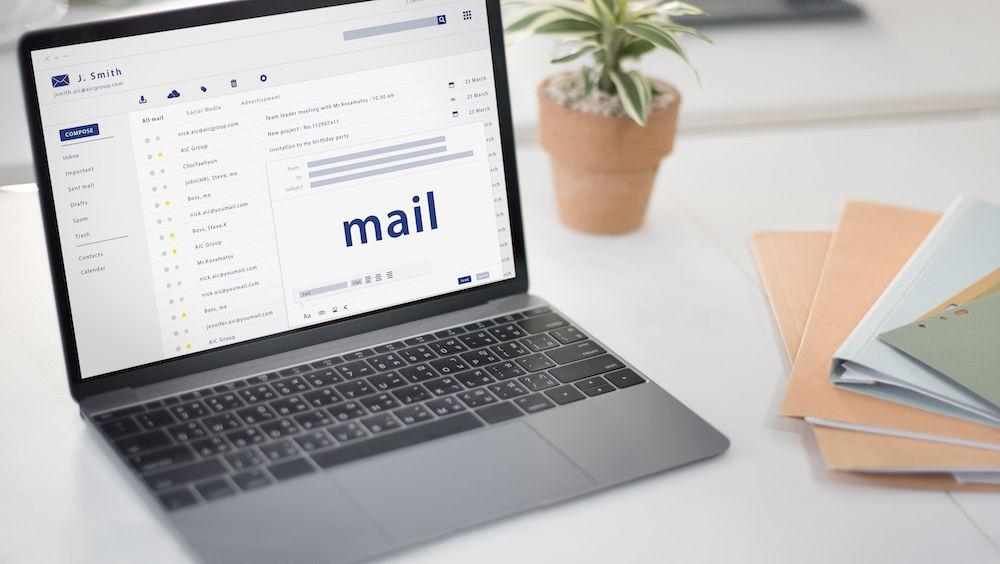
Introduction
Email has become a fundamental communication tool for businesses. However, with cyber threats on the rise, ensuring the security of your email communication is paramount. This blog post delves into the crucial elements of email security – MX, SPF, DKIM, and DMARC, highlighting their significance in safeguarding your business emails.
Understanding the Basics: What are MX, SPF, DKIM, and DMARC?
* MX Records: Handle email delivery through DNS settings.
* SPF (Sender Policy Framework): Prevent email spoofing.
* DKIM (DomainKeys Identified Mail): Verify email authenticity.
* DMARC (Domain-based Message Authentication, Reporting, and Conformance): Enhance email security brand protection.
The Increasing Importance of Secure Email Communication
Email to be a primary target for cybercriminals due to its widespread use guarding your business emails with robust security protocols is crucial to protect sensitive information, maintain trust with clients, and uphold your brand reputation.
Overview of the Importance of Setting Up MX, SPF, DKIM, DMARC
By implementing and configuring MX, SPF, DKIM, and DMARC protocols effectively, businesses can establish a secure email environment that minimises the risk of email fraud, phishing attacks, and unauthorised access to confidential data.
MX Records: Ensuring Email Delivery
What are MX Records and How Do They Work?
MX (Mail Exchange) records specify the mail servers responsible for receiving email messages on behalf of a domain. Configuring MX records correctly ensures the smooth delivery of emails to the intended recipients.
The Importance of Configuring and Monitoring MX Records Regularly
Regular monitoring and updating of MX records are crucial to prevent email delivery issues, such as bounced emails or delays in message transmission. It helps maintain the integrity of your email communication channels.
Common Pitfalls and Best Practices for Managing MX Records
Pitfalls: Incorrect configuration leading to email delivery failures.
Best Practices: Regularly review and update MX records, use reputable email service providers, and implement redundancy for failover protection.
SPF: Preventing Email Spoofing and Phishing Attacks
What is SPF and How Does it Help in Preventing Email Fraud?
SPF is an email authentication protocol that validates the origin of email messages by checking if they come from authorised servers. It prevents email spoofing and minimises the risk of phishing attacks targeting your domain.
Setting Up SPF Records Correctly for Enhanced Email Security
Properly configuring SPF records involves defining authorised sending servers and specifying allowed IP addresses. This ensures that emails sent from unauthorised sources are detected and quarantined by recipient servers.
How SPF Complements Other Email Authentication Methods like DKIM and DMARC
SPF works in conjunction with DKIM and DMARC to provide comprehensive email security. Together, these protocols authenticate the source, verify the integrity, and set policies for handling suspicious emails, reducing the likelihood of email-based threats.
DKIM: Verifying Email Authenticity and Integrity
Understanding DKIM and Its Role in Email Authentication
DKIM adds a digital signature to outgoing emails, allowing recipients to verify the authenticity and integrity of the messages. It helps in distinguishing legitimate emails from fraudulent ones.
Key Steps for Implementing DKIM for Reliable Email Delivery
Implementing DKIM involves generating cryptographic keys, publishing public keys in DNS records, and configuring email servers to sign outgoing messages. This process verifies the sender’s identity and ensures secure email transmission.
Troubleshooting Common Issues with DKIM Implementation
Issue: Misconfiguration of DKIM keys.
Solution: Regularly monitor DKIM key validity, update public keys as needed, and troubleshoot delivery problems promptly for uninterrupted email authentication.
DMARC: Enhancing Email Security and Brand Protection
The Purpose and Benefits of DMARC in Email Authentication
DMARC combines SPF and DKIM to provide domain owners with greater control over email handling and visibility into email-spoofing attempts. It helps protect your brand reputation and strengthen email security measures.
How to Implement DMARC Policies Effectively for Your Business
Deploying DMARC involves setting up policies to specify how unauthorised emails should be handled, such as quarantining or rejecting them. Monitoring DMARC reports allows businesses to gain insights into email authentication status and potential threats.
Monitoring and Maintaining DMARC to Safeguard Your Email Reputation
Regularly monitoring DMARC reports, analysing email authentication data, and making necessary adjustments to DMARC policies are vital for maintaining a secure email ecosystem. Continuous vigilance is key to safeguarding your brand against email-based attacks.
Conclusion
In conclusion, the significance of setting up MX, SPF, DKIM, and DMARC for secure business email cannot be overstated. By implementing these protocols effectively, businesses can enhance email security, prevent fraud, and protect their brand reputation in an ever-evolving digital landscape. Regular monitoring and updating of email authentication protocols are essential to ensure optimal security and maintain trust with clients.
Key Takeaways for Businesses to Improve Email Security Practices
* Priorities the implementation of MX, SPF, DKIM, and DMARC protocols.
* Regularly review and update email authentication settings.
* Educate employees on email security best practices to mitigate risks.
Importance of Regular Monitoring and Updating of Email Authentication Protocols
Continuous monitoring and proactive maintenance of email authentication protocols are necessary to adapt to evolving threats and ensure long-term email security for your business.
FAQs
Consequences of not setting up MX, SPF, DKIM, DMARC for business email include increased vulnerability to email fraud, phishing attacks, and compromise of sensitive data.
You can set up MX, SPF, DKIM, DMARC on your own with proper guidance, but technical expertise may be required for more complex configurations.
Email authentication protocols should be reviewed and updated regularly, ideally at least every six months, to stay ahead of evolving security threats.
By prioritising the implementation and maintenance of MX, SPF, DKIM, and DMARC protocols, businesses can fortify their email security defences, build trust with customers, and safeguard their reputations in the digital realm. Stay vigilant, stay secure.
We provide 12 MONTHS FREE ongoing maintenance and support
Call +34 641 833 947 | +44 7868849993

